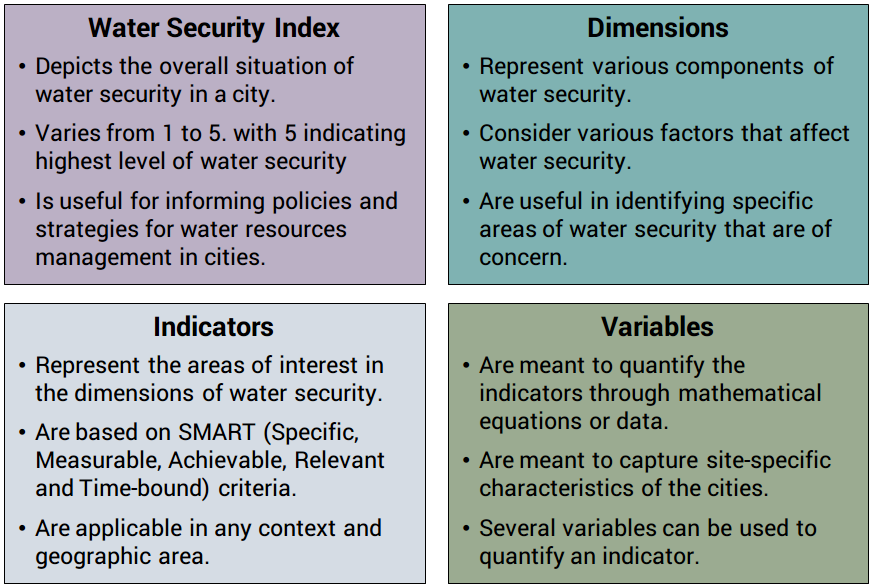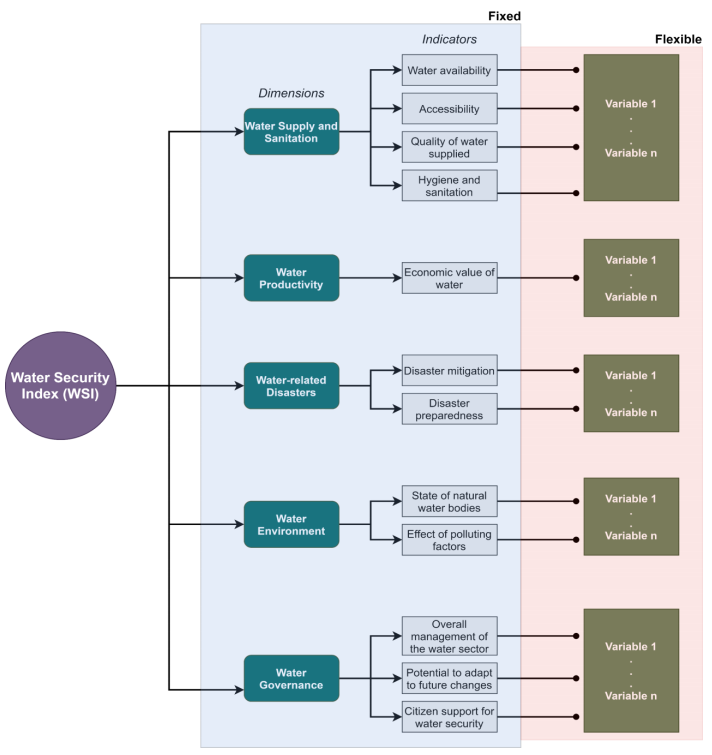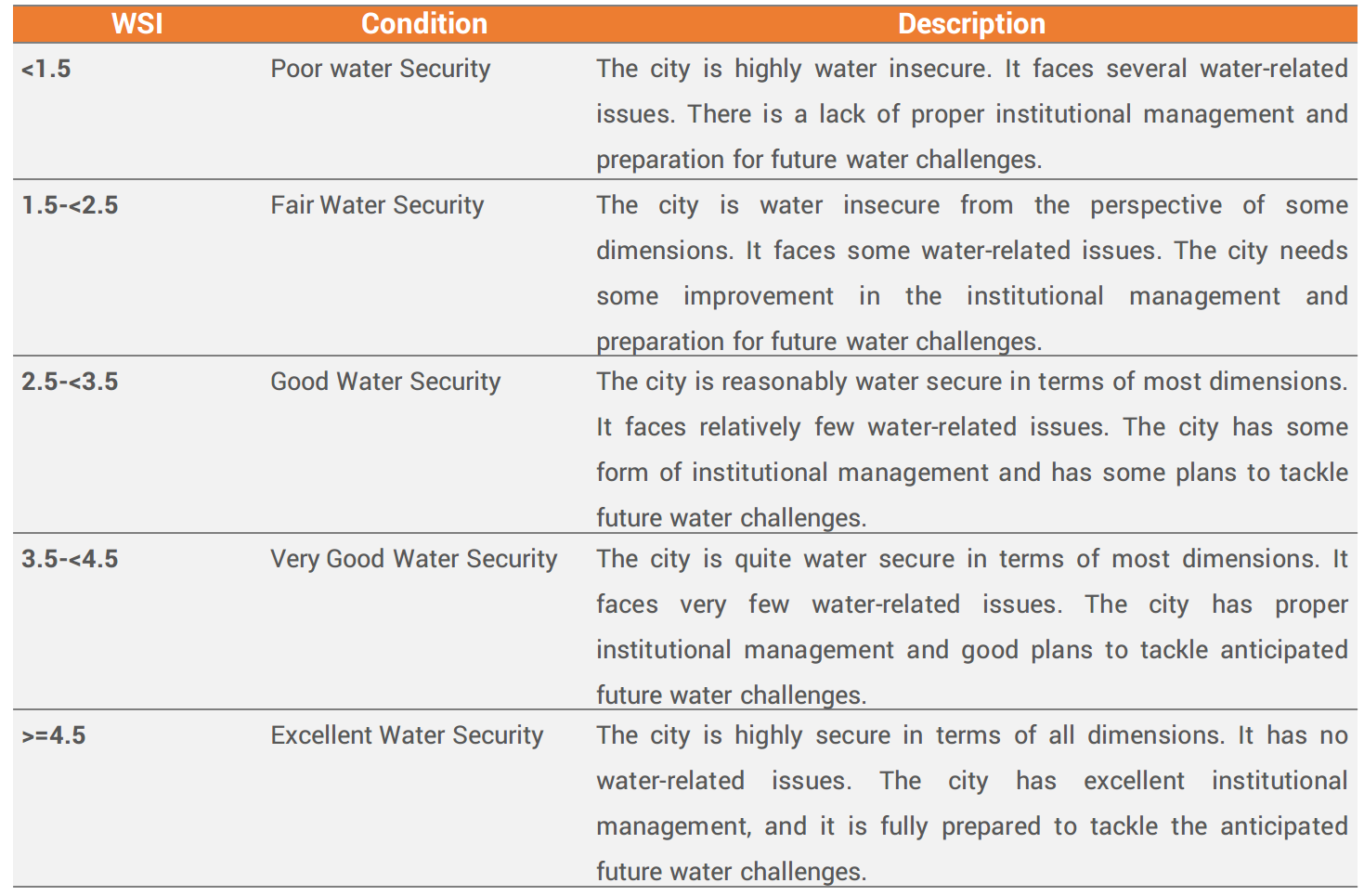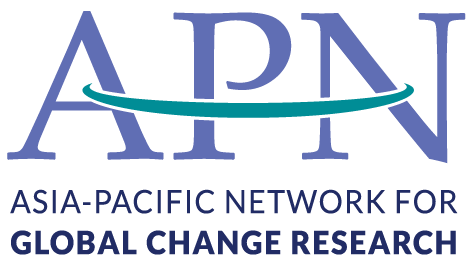WATSAT Structure
The WATSAT framework is unique because it has three- layered structure – dimensions, indicators, and variables that culminate into a Water Security Index (WSI).
This three-layered structure helps to keep the framework generic, while at the same time enables it to capture site-specific issues and challenges about water security. Hence, the dimensions and indicators are kept fixed for any city. The choice of the variables is up to the user, depending upon what they think is relevant for their city. WATSAT comprises with a list of potential variables to choose from.

WATSAT comprises five dimensions, twelve indicators and provides the users a list of potential variables to choose from.

Need more info ?
WATSAT framework is discussed in detail in a paper published in the journal of Environmental Research.
Reference Value
In order to calculate the WSI, first each of the variables are normalized in the range 1–5 using reference values. Reference values can help classify the magnitudes of the variables into different categories, which can then be assigned scores between 1 and 5.
Example: India's Ministry of Housing and Urban Affairs (formerly Ministry of Urban Development India, 2008) recommends a per capita water supply norm of 135 lpcd for cities. If one of the indicators is ‘water availability’, then this per capita water supply norm could be a useful variable to measure the indicator, and 135 lpcd can serve as a reference value. With this reference value, five different categories can be fixed. The first category would be for per capita water supply of 135 lpcd and above. Given that this is the ideal case, this category would be assigned a score of 5. In contrast, as per the aforementioned Ministry, a per capita supply of below 50 lpcd is considered unsatisfactory. This reference value can help form another category, where the per capita water supply is less than 50 lpcd, with a corresponding score of 1.
Interpretation of WSI

Acknowledgements
WATSAT is developed by Asian Institute of Technology (AIT), in collaboration with Thuyloi University (TLU) in Vietnam, Central University of Rajasthan (CURAJ) in India and Tribhuvan University (TU) in Nepal.
The project partners would like to specially thank the Asia Pacific Network for Global Change Research (APN) for their grant support in development of the tool. Further improvements in the the tool was supported by the Global Water and Climate Adaptation Centre - Aachen - Bangkok - Chennai - Dresden (ABCD-CENTRE).



Contact Us
Contact us to provide awesome ideas or make suggestions to further improve the tool.
Water Engineering and Management (WEM)
Asian Institute of Technology (AIT)
Khlong Luang, Pathum Thani - 12120, Thailand
msbabel@ait.asia , msbabel@gmail.com
Tel : +66-2524-5790